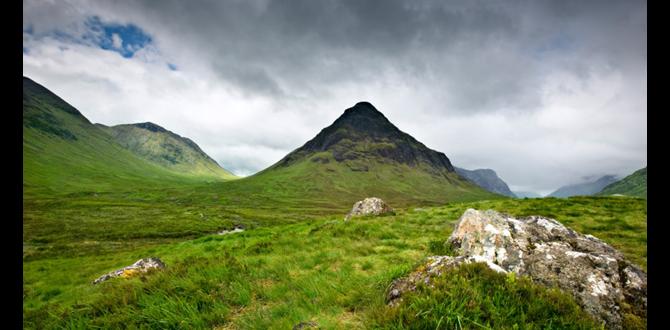Don’t let rain dampen your Bhutan adventure! A Bhutan rainy day plan is easy with these essential fun activities, from exploring cultural sites indoors to enjoying cozy local experiences that offer a unique glimpse into Bhutanese life.
Bhutan, the Land of the Thunder Dragon, is a mesmerising destination. But what happens when the skies decide to sprinkle a little magic during your visit? Don’t let a “Bhutan rainy day plan” stress you out! Unexpected downpours, while common, don’t have to derail your trip. In fact, embracing the rain can lead to some of the most authentic and memorable experiences. This guide is for you, the curious traveler looking for ways to make the most of every moment, rain or shine. We’ll explore simple, enjoyable activities that keep you dry, engaged, and connected to the heart of Bhutan.
Adapting Your Bhutan Rainy Day Plan
A little rain in Bhutan can be a beautiful thing. It washes the air clean, making the lush landscapes even more vibrant. Instead of seeing rain as an obstacle, think of it as an opportunity to experience Bhutan from a different perspective. Many of the country’s most profound cultural treasures are found within its magnificent dzongs, monasteries, and museums, which are perfect for a rainy day. Plus, the slower pace that rain sometimes brings can be a chance to truly soak in the local atmosphere.
Essential Indoor Adventures for a Bhutan Rainy Day
When the clouds gather, Bhutan offers a wealth of indoor activities that are both enriching and enjoyable. These options allow you to stay comfortable while still immersing yourself in the rich culture and history of the kingdom.
1. Explore Majestic Dzongs and Monasteries
Bhutan’s iconic dzongs (fortress-monasteries) are not just architectural marvels; they are active centers of culture and spirituality. On a rainy day, these impressive structures provide ample exploration opportunities.
Punakha Dzong: Often considered the most beautiful dzong, its location at the confluence of two rivers is breathtaking, even in the rain. Inside, you can admire intricate murals, serene courtyards, and the sacred relics. It’s a vital administrative and religious center, offering a glimpse into Bhutanese governance and faith.
Paro Dzong (Rinpung Dzong): This fortress is a fantastic place to wander. Its impressive stone walls and traditional Bhutanese architecture are captivating. The National Museum of Bhutan is also located here, housed in the Ta Dzong (watchtower), providing a wealth of historical artifacts.
Thimphu Dzong (Tashichho Dzong): This is the seat of the government and the King’s throne room. On a rainy afternoon, you can explore its grand halls and learn about Bhutan’s unique political and religious structure. Seeing monks in their daily routines is a peaceful experience.
When visiting these sacred sites, remember to dress respectfully. This typically means covering your shoulders and knees. You’ll usually need to remove your shoes before entering prayer halls.
2. Delve into Museums and Art Galleries
Bhutan has several excellent museums that offer deep insights into its past and present. These are ideal havens on a wet day.
National Museum of Bhutan (Ta Dzong, Paro): As mentioned, this is a must-visit. It houses a fantastic collection of Bhutanese artifacts, including thangkas (religious paintings), masks, stamps, and ancient weapons. It’s a journey through Bhutan’s history, all under one roof.
Folk Heritage Museum (Thimphu): This museum offers a detailed look at traditional Bhutanese rural life. You can see a fascinating re-creation of a traditional farmhouse, complete with household items and farming implements. It’s a charming way to understand the lives of ordinary Bhutanese people.
National Textile Museum (Thimphu): Bhutanese textiles are renowned for their intricate patterns and vibrant colors. This museum beautifully showcases this art form, displaying royal garments and traditional dress. It’s a visual treat and a testament to the skill of Bhutanese weavers.
3. Discover the Art of Bhutanese Crafts
Bhutanese craftsmanship is world-class, and many activities focus on these traditional arts. What better way to spend a rainy day than learning about or even trying your hand at these skills?
Zorig Chusum (School of 13 Arts and Crafts): In Thimphu, you can visit the Institute for Zorig Chusum. Here, students learn the 13 traditional arts and crafts of Bhutan, including painting, sculpture, embroidery, wood carving, and more. Watching the students practice their skills is inspiring. Some places may even offer short workshops for visitors.
Handicraft Shops: Many towns have shops filled with beautiful Bhutanese handicrafts. Browsing these shops for intricate textiles, carved wooden bowls, paintings, and silver jewelry can be a delightful way to pass the time. It’s also a great opportunity to pick up unique souvenirs.
4. Experience a Traditional Hot Stone Bath
For ultimate relaxation on a chilly, rainy day, nothing beats a traditional Bhutanese hot stone bath (Dotsho). This ancient therapeutic practice is deeply soothing and offers a unique cultural immersion.
How it works: River stones are heated over an open fire and then carefully placed into a wooden tub filled with water. The heated stones gradually release minerals into the water, creating a therapeutic soak. Herbs like Artemisia are often added for extra benefit.
Where to find one: Many farmhouses and some hotels offer this experience. It’s often best arranged through your hotel or guide. It’s a fantastic way to unwind after a day of sightseeing, especially when the weather is damp. This can be a particularly comforting experience for travelers who might need extra care, such as adults or children using adult diapers, offering a private and reassuring way to relax.
5. Immerse Yourself in a Bhutanese Cooking Class or Tea House
Food is a wonderful window into any culture, and Bhutan is no exception. Learning to cook a local dish or simply enjoying a warm beverage in a cozy setting can be a perfect rainy day activity.
Cooking Classes: Many hotels and some local communities offer Bhutanese cooking classes. You can learn to make staples like Ema Datshi (chili and cheese stew), red rice, and other local delicacies. It’s a hands-on, delicious way to engage with Bhutanese culture.
Local Tea Houses: Seek out a local tea house. Enjoy a cup of Bhutanese butter tea (Suja) or regular tea, accompanied by local snacks like Phaksha Paa (pork cooked with chili) or Kewa Datshi (potato and cheese bake). Observe the local life around you; it’s a genuinely authentic experience.
6. Attend a Traditional Archery Match
Archery is the national sport of Bhutan, and it’s usually played outdoors. However, sometimes matches can be witnessed from covered viewing areas or shelters, especially during local festivals or scheduled events. While a full outdoor match might be challenging in heavy rain, inquire with your guide if there’s a possibility of observing a practice session or a partially sheltered event. The vibrant atmosphere, colorful team outfits, and lively celebrations are captivating, rain or shine.
Tips for a Smooth Bhutan Rainy Day Plan
Planning ahead is key to enjoying your Bhutanese journey, regardless of the weather. Here are some practical tips to ensure your rainy days are as enjoyable as the sunny ones.
Pack Smart for the Rain
Being prepared is half the battle when it comes to travel. For Bhutan, especially during the monsoon season (June to September), rain gear is essential.
Waterproof Outerwear: A good quality waterproof and windproof jacket is a must. Consider one with a hood to keep your head dry.
Umbrella: A sturdy, travel-sized umbrella is invaluable for shorter walks and transfers between indoor locations.
Waterproof Footwear: Comfortable, waterproof walking shoes or boots are crucial. Bhutan’s terrain can be slippery when wet. If you’re concerned about spills or accidents that might require extra protection, always ensure you have reliable adult diapers or child diapers packed, providing peace of mind for both adults and families traveling with children.
Quick-Dry Clothing: Pack layers of clothing made from quick-drying materials like synthetics or merino wool.
Waterproof Bag or Cover: Protect your electronics and important documents from moisture with a waterproof bag or a rain cover for your backpack.
Stay Flexible with Your Itinerary
While you might have a dream itinerary, being flexible is crucial in Bhutan.
Embrace Spontaneity: If a sudden shower hits, be ready to swap an outdoor activity for an indoor one. Your guide can be a great resource for spontaneous changes.
Check Weather Forecasts: Keep an eye on local weather forecasts, but understand they can change rapidly.
Prioritize Comfort: Don’t push yourself to do something uncomfortable in bad weather. It’s better to relax and enjoy a warm cup of tea.
Embrace Local Transport
While private transport is common, consider local options for short distances if the rain is light and you’re feeling adventurous.
Taxis: For quick transfers, taxis are readily available in towns.
Walking (with care): If the rain is very light, a short walk under an umbrella can be pleasant, allowing you to observe daily life. Be mindful of slippery pavements.
Bhutan Rainfall and Best Times to Visit
Understanding Bhutan’s climate can help you prepare for potential rainy days. While rain can occur any time of year, there are distinct patterns.
The summer monsoon season typically runs from June to September. During these months, you can expect frequent rainfall, often in the afternoons, which can be quite heavy. However, mornings are frequently clear and sunny, offering good opportunities for sightseeing. The landscape turns incredibly lush and green during this period.
The shoulder seasons, spring (March to May) and autumn (September to November), generally offer pleasant weather with less frequent rain. These are often considered the best times to visit Bhutan for clear skies and comfortable temperatures. Even during these periods, brief showers are possible, so a rain plan is always wise.
Winter (December to February) is dry and cold, with very little rainfall, but snow can affect higher mountain passes.
Example Itinerary Adjustment for a Rainy Day in Paro
Let’s imagine you’re in Paro and rain has set in. Instead of fretting, here’s how you could adjust:
| Original Plan (Sunny Day) | Rainy Day Alternative | Notes |
| :————————————————- | :———————————————————————————————————————————————– | :—————————————————————————————————— |
| Hike to Taktsang Monastery (Tiger’s Nest) | Visit Paro Dzong (Rinpung Dzong) and explore its monastic complex. | Tiger’s Nest hike is very challenging in wet conditions. Dzong offers significant indoor exploration. |
| Explore the Paro town markets outdoors. | Spend time at the National Museum (Ta Dzong), then browse local handicraft shops for souvenirs. | Markets can be muddy and unpleasant in rain. Museums and shops are dry and engaging. |
| Picnic lunch with valley views. | Enjoy a traditional Bhutanese lunch at a local restaurant or your hotel. | Outdoor dining is impractical. Savor local cuisine indoors. |
| Visit Drugyel Dzong ruins in the afternoon. | Participate in a short Bhutanese cooking demonstration or enjoy a traditional hot stone bath at a local farmhouse. | Ruins can be inaccessible and exposed to the elements. Culinary or relaxation activities are ideal. |
Staying Connected and Entertained Indoors
While the primary focus is on cultural immersion, there are ways to stay connected and entertained if you find yourself with extended indoor time.
Bhutanese Card Games: Ask your guide or hotel staff if you can observe or even play local card games. It’s a fun way to interact with locals.
Reading and Journaling: Use the downtime to read up on Bhutanese history or culture, or simply journal about your experiences.
Connectivity: While internet access can be spotty in some areas, most hotels in tourist centers offer Wi-Fi. It’s a good time to catch up on emails or share photos. Consider purchasing a local SIM card for more reliable data access.
Photography: Even on a rainy day, there are photographic opportunities. The misty landscapes, dramatic skies, and indoor details of dzongs can make for stunning shots. Ensure your camera gear is protected from moisture.
Practical Preparations for Families Traveling with Children
Traveling with children often requires extra consideration, especially concerning comfort and hygiene. If your “Bhutan rainy day plan” includes little ones, unexpected showers need a solid strategy.
Diapering Essentials: For parents traveling with infants or toddlers, ensuring a consistent supply of baby diapers is paramount. Consider traveling with more than you think you’ll need, or research where you can purchase them locally, though availability might be limited outside major towns. Travel-sized diaper cream and wipes are also vital.
Comfortable, Dry Clothing: Pack several changes of clothes. Waterproof outerwear for kids is as important as it is for adults. Having extra socks is always a good idea.
Indoor Entertainment: Bring along small, travel-friendly toys, books, or drawing supplies to keep children occupied during indoor downtime.
Snacks: Familiar snacks can be a lifesaver when children are tired or unsettled by a change in weather.
* Hot Stone Baths for Families: Many hot stone bath providers are family-friendly. It can be a wonderfully soothing experience for children, especially after a day of being indoors or dealing with changing clothes due to rain. Ensure the water temperature is suitable for children.
Frequently Asked Questions About Bhutan Rainy Days
Here are some common questions beginner travelers have about dealing with rain in Bhutan.
Q1: Is it always raining in Bhutan during the monsoon season?
A1: Not always. The monsoon season (June-September) brings increased rainfall, often in the form of heavy afternoon showers, sometimes lasting for a few hours. Mornings and evenings can still be clear and pleasant for activities. It’s not constant rain throughout the day, every day.
Q2: Can I still visit monasteries and dzongs if it’s raining?
A2: Yes, absolutely! Monasteries and dzongs are excellent indoor destinations. Their interiors offer protection from the rain and are filled with cultural and historical treasures to explore. You’ll likely need to remove your shoes, so waterproof footwear with easy on-and-off is useful.
Q3: Is Tiger’s Nest accessible in the rain?
A3: The hike to Taktsang Monastery (Tiger’s Nest) is challenging and can be dangerous in heavy rain or fog. Trails can become slippery and visibility can be poor. While it’s technically possible, it’s often recommended to postpone this hike until the weather clears for safety and enjoyment.
Q4: What kind of clothing should I pack if I’m traveling during the rainy season?
A4: Pack layers! Include a lightweight, waterproof and windproof jacket with a hood, waterproof shoes or boots, quick-drying pants, and a travel umbrella. Extra pairs of socks are also a good idea.
Q5: Can I still enjoy outdoor activities on a rainy day?
A5: For very light rain or drizzle, short walks in towns or visiting attractions with covered areas might be possible with proper rain gear. However, for heavier rain, it’s best to focus on indoor alternatives to ensure comfort and safety.
Q6: Are hot stone baths a good option for a rainy day in Bhutan?
A6: Yes, a traditional hot stone bath is a perfect rainy day activity! It’s incredibly relaxing and a wonderful way to warm up and unwind. Most are enjoyed in covered or semi-covered outdoor settings, making them suitable even when it’s raining.
Q7: What about travel plans with children and diapering needs during rain?
A7: Ensure you have an ample supply of adult diapers (for adults or older children who might need them) or child diapers (for younger children). Pack extra changes of clothes and travel-friendly entertainment options. Indoor activities like museums, cooking classes, or even cozying up with books at the hotel are great for kids.
Conclusion
A rainy day in Bhutan isn’t a setback; it’s an invitation to discover a different facet of this enchanting kingdom. From the spiritual serenity of ancient dzongs and the captivating stories held within museums, to the therapeutic warmth of a hot stone bath and the delicious exploration of Bhutanese cuisine, there are abundant ways to make your rainy days as enriching and enjoyable as any sunny one. By packing smartly, staying flexible, and embracing the unique indoor offerings, you can ensure your journey through the Land of the Thunder Dragon is magical, no matter what the weather brings. So, let the clouds add an atmospheric charm to your adventure, and create lasting memories that are as deep and vibrant as the Bhutanese culture itself. Your Bhutan rainy day plan is now complete, and your adventure is ready, come rain or shine!





